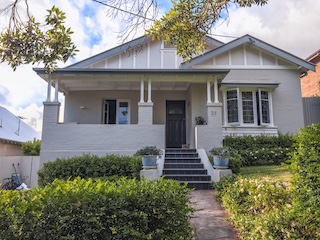Liverpool suburb profile
Liverpool is a bustling suburb located in the Greater Western Sydney region, approximately 27km southwest of the Sydney CBD. Known as a major commercial and administrative hub, it offers a diverse and multicultural community with a rich history. Liverpool boasts a wide range of amenities, including shopping centres, hospitals, and educational institutions, making it a convenient place for families and professionals. The suburb is well-connected by public transport, with a major train station and bus services. With ongoing developments and a vibrant local economy, Liverpool continues to grow as a key centre in Sydney's expanding metropolitan area.
Liverpool property market performance
Current median dwelling price$836,000Past 3 months
Property growth+6.0%Past 12 months
Liverpool’s property market has shown varied performance over the past 12 months. House values have surged by 14%, bringing the median house price to $1.12 million, while unit values have remained stable with no change, maintaining a median price of $472,000. This indicates a stronger demand for houses compared to units in the area.
Sales activity has been more robust in the unit market, with 124 units sold compared to just 15 houses over the past three months. However, houses are taking longer to sell, with a median of 96 days on the market, compared to 73 days for units, suggesting a slower turnover for houses.
The rental market in Liverpool has seen moderate growth, with house rents increasing by 5.1% and unit rents rising by 7.8% over the last 12 months, reflecting a healthy demand for rental properties in the suburb.
| Houses | Units | |
|---|---|---|
Median price Past 3 months | $1.20M | $469K |
Change in value Past 12 months | 12.1% | N/A |
Sold Past 3 months | 12 | 92 |
Median days on market Past 12 months | 103 | 72 |
Average rent Past 12 months | $625 | $550 |
Change in rent Past 12 months | 4.2% | 5.8% |
5 year median price trend for houses and units
Liverpool demographics
Liverpool, located in the Greater Western Sydney region, is a bustling suburb known for its cultural diversity and vibrant community life. With a population of 31,078, Liverpool serves as a major commercial and administrative hub, offering a range of amenities and services that cater to its residents. The median age of 34 suggests a youthful and dynamic population, with many families and young professionals calling this suburb home.
The suburb's housing landscape is predominantly rental-based, with 63.5% of properties being rented. This high rental rate reflects Liverpool's appeal to those seeking flexible living arrangements, including students and professionals who are drawn to the area's accessibility and employment opportunities. The suburb's family-oriented nature is evident, with 45.2% of households being couple families with children, while 28.9% are couple families without children, and 23.2% are one-parent families.
Liverpool's diverse community is complemented by its rich cultural offerings, including a variety of dining options, shopping centers, and recreational facilities. The suburb's strategic location, with excellent transport links to Sydney's CBD and other parts of the city, makes it an attractive destination for those seeking a balance between urban convenience and suburban comfort. With ongoing developments and a strong sense of community, Liverpool continues to be a sought-after suburb for both residents and investors alike.
Liverpool infrastructure, key developments and investment opportunities
Liverpool is undergoing significant transformation with several major projects underway. The $740 million Liverpool Health and Academic Precinct expansion is set to be completed in 2026, enhancing healthcare facilities and creating new jobs. Additionally, the $1.5 billion Liverpool Civic Place development in the CBD will deliver new council offices, childcare facilities, a library, and commercial spaces by 2028, revitalizing the city center.
Transport improvements include the recently opened rapid bus corridor connecting Liverpool to the new Western Sydney International Airport. Plans for the future Sydney Metro - Western Sydney Airport Line also include a station at Liverpool, which will improve connectivity. These infrastructure projects, along with Liverpool's designation as part of the "third CBD" for Sydney, are likely to boost property demand and values in the coming years as the area becomes increasingly attractive to residents and businesses.
Liverpool rental market trends
The rental market in Liverpool has experienced moderate growth, with house rents increasing by 5.1% over the past year to $620 per week, while unit rents have risen by 7.8% to $550 per week. With ongoing development and infrastructure improvements, Liverpool continues to attract renters and investors seeking a balance of affordability and growth potential in the Sydney region.
Suburbs near Liverpool
Some popular suburbs near Liverpool include:
How does Liverpool compare to nearby suburbs?
- Median house prices: Liverpool’s median house price is 15.7% higher than Lurnea’s.
- Median unit prices: Liverpool’s median unit price is 6.6% higher than Cabramatta’s.
- House price growth: Over the past 12 months, house prices in Liverpool have grown 5.2% higher than in Lurnea.
- Unit price growth: Property prices in nearby Cabramatta have risen 3.6% more than in Liverpool over the past year.
- Selling speed for houses: Properties in nearby Lurnea are selling 43.7% faster than in Liverpool.
- Selling speed for units: Properties in nearby Cabramatta are selling 25.0% faster than in Liverpool.
- Investment considerations: In Liverpool, the rental yield for house is 28.2% lower than the Sydney average, while the rental yield for units is 26.5% lower.
- House price growth: Over the past 12 months, house prices in Liverpool have grown 43.6% lower than the average rate of growth across Sydney.
- Unit price growth:Over the past 12 months, unit prices in Liverpool have grown 45.6% lower than the average rate of growth for units across Sydney.

